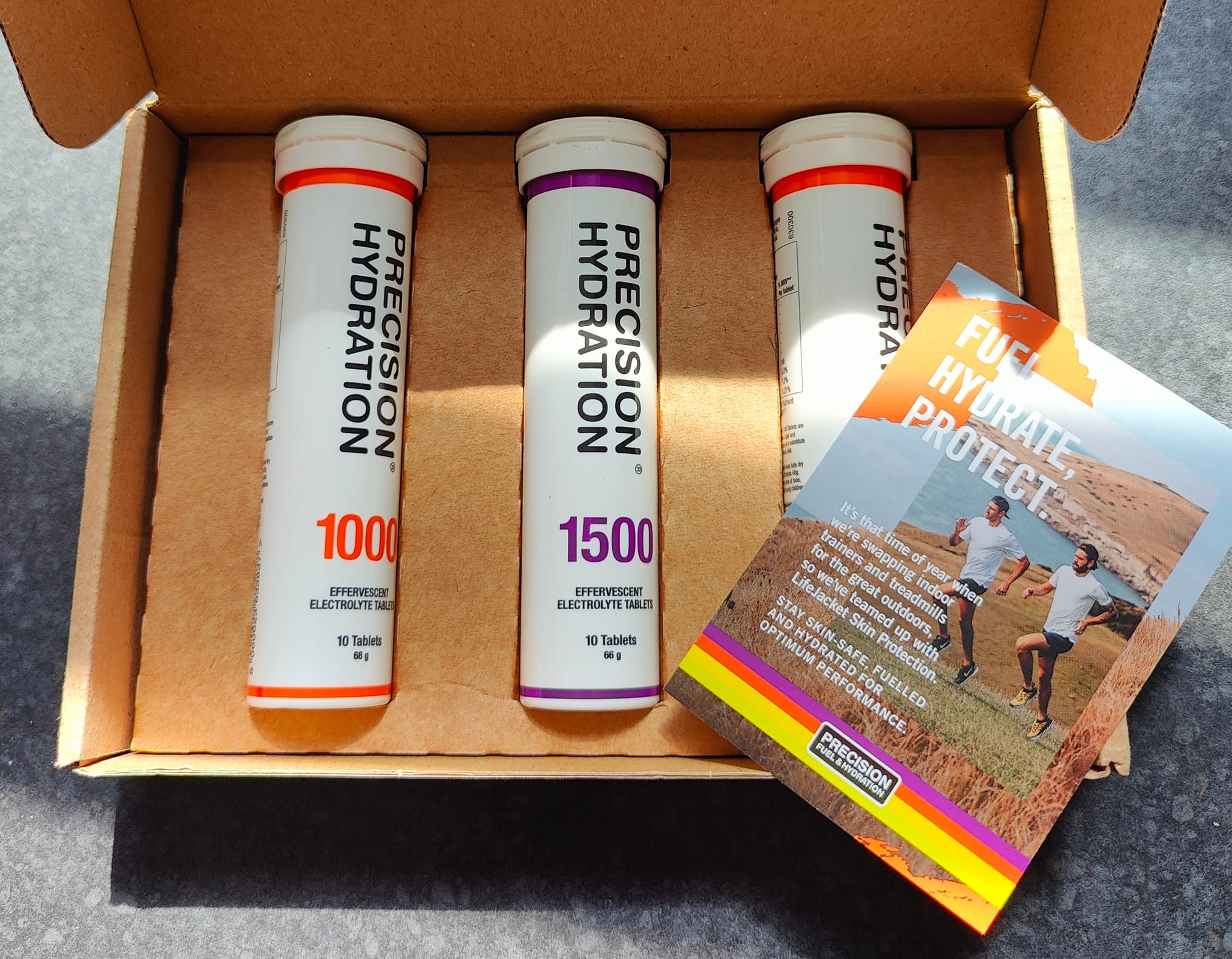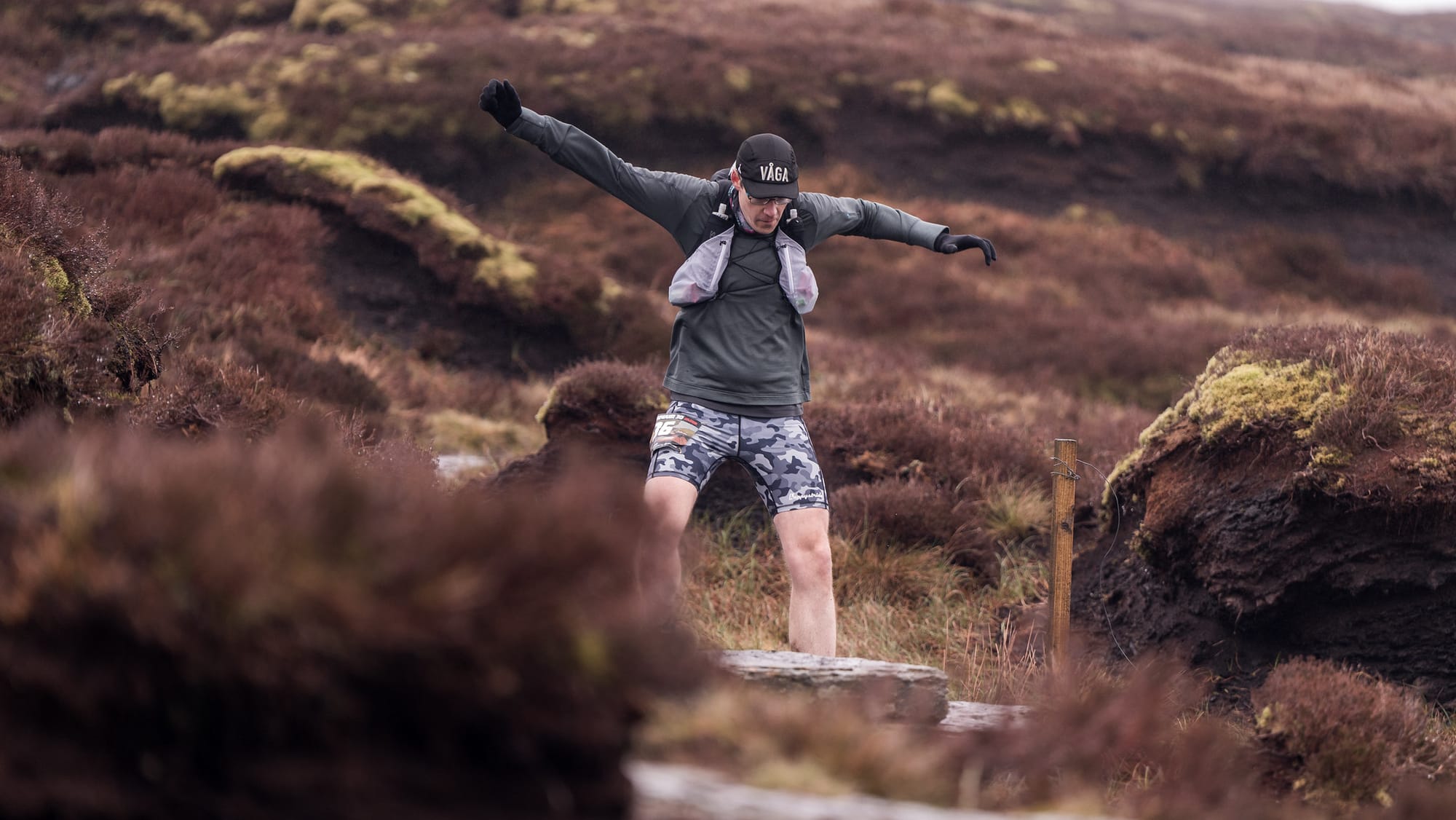Epona 100 Fuel & Pace Plan
4 weeks til the big day: here's how I'm planning to tackle the hardest thing I've ever done.

It's four weeks until the big A race of the year, my first 100 miler: the Epona 100 Ultra. I'm excited! I'm nervous! I'm petrified! 😱
Over the many (many!) long runs these past 6 months I've been hashing out a plan of how I'm going to fuel, stay hydrated, and pace myself throughout the weekend. Trying to incorporate lessons from the numerous problems of the past (notably GI issues, suffering in hot weather & pushing too hard too early); I'm hoping it'll lead to crossing that finish line in one piece, maybe even smiling 🙂
Fuelling
Real food works best for me, the times when I've felt strongest the longest (Gower 50, Taffy 55 & Autumn GMU) were all times I mixed it up with a range of grub, alternating between sweet and savoury and chomping what I felt like at each aid station. With the distance it'll be super slow paced with plenty of walking breaks so enough time to get something more solid down.
On the day I'll have a set of labelled containers inside my dropbag, 1 per major checkpoint, each with these in:
- 3-4 Veloforte Bars (varied flavours)
- 3 Voom Pocket Rocket Bars
- 3 Veloforte Chews
- Some comfort food
This is because there are large gaps between when your drop bag is available, specifically:
- Start Line: 38km of fuel needed for the next stretch
- CP2: 41km of fuel needed
- CP5: 48km of fuel needed
- CP8: 32km of fuel needed
- Finish Line
Though there are aid stations between these with no drop bag availability where I can get more food and water.
Veloforte Bars have worked well for me in the past: they are pressed fruit and nut bars, tasty, packed with energy and easy to carry. Each bar is about 1 hours worth of fuel, and release the energy a little more steadily then a gel would.

Voom Pocket Rocket Bars are a bit like Kendal Mint Cake, pretty raw ingredients forming a quick hit of energy. I'll alternate these with the Veloforte Bars to stay balanced. The flavours are great and each bar is the equivalent to 2 gels.

Finally we've got the Veloforte Chews, which are a bit like turkish delight, made with fruit and nothing artificial. I'll mix between Voom and these chews when looking for something more sugary. Again each pack is the same as 2 gels.

I'll carry some comfort food too, something different in each container, mainly there to give me a boost and make me smile if I need it. Thinking things like: a bagel for lunch in one, pop tarts in another, some pick n mix and so on.
At aid stations I'll eat what I feel like, and likely take away a few things that strike my fancy to supplement the core fuel.
Finally: meal times. A big failing in previous runs for me has been trying to continue with the carby food right the way through, without pausing at lunch or dinner to eat properly. I'll be taking advantage of the aid stations and ensuring I'm getting some solid food in when available, grabbing a sandwich, a pasta pot, something warm and so on.
Hydration
I was lucky enough to have a chance to get sweat tested using Precision Hydration's method from a local coach Leigh Archer. This was key for me as I've always struggled with getting my sodium intake right, especially when it's hot, and usually end up with a shriveled up stomach, unable to eat, often skirting a DNF.
My results came in at a sodium loss of 676mg per litre of sweat, which means I should be aiming to take 338mg for every 500ml water. Knowing the exact figure helps, as I can then work out whether I've been taking too much, or too little salt.

To that end I'll be using PH 1000 tablets in my drinks (which give 500mg to 500ml water). This was recommended due to it being a long day in what are likely to be especially hot conditions for the UK, it means I'll have a little more sodium than I need, but know if it starts to feel too much it's because I'm having more than I need (rather than having to guess), and can dial back to plain water for a stretch.

Between checkpoints then I'll have 3x 500ml bottles of water, each with a PH 1000 tablet, and will be drinking to thirst rather than trying to get a target amount down each hour.
The added advantage of this is that, because I'm not depending on my drink for carbs, I can be a little more free with food at checkpoints and dial back to just water if feeling bloated. I've found in the past with Tailwind that, if I feel any tummy upset, the drink makes it worse as it pushes more sugar into your stomach.
I'll have a filter bottle on me just in case too: with the weather expected to be hot there is always a risk of running out of water, and the mountains have plenty of springs to fill from.
Finally, the night before and morning of I'll do "sodium loading": which is where you drink a glass of water with a salt tablet to ensure you're body is topped up, as you do with carb loading.
Pacing
The biggie, and one I can't afford to get wrong here. Go out too fast and it'll all end in tears before the 50 mile mark. There are a LOT of hills to climb on the Epona and tiring the legs early is a bad shout.

To that end I've set 3 guardrails for myself:
- No higher than 06:00/km at any time
- This is to prevent me running too fast on downhills or tarmac sections
- Forces me to keep my legs fresh and turning over steadily
- No ego, no exceptions. Float, don't push.
- This is my main metric as, especially on race day with all the adrenaline, heart rate can be a little unpredictable
- No higher than zone 2 HR at any time
- Walk or rest immediately if the heart rate goes too high
- A higher heart rate is when GI issues start to occur as the blood is pulled from the stomach
- Every 30 minutes, slow to a walk, eat, drink water, sort out any kit, take your time
- Gives me a bit of a reset, helps ensure I'm fuelling properly
Every uphill is to be walked, every downhill is to be taken gently (no sending it!)
Other Admin Bits
Footcare is very important: stop and remove any stones or grit as you feel them, not a mile down the road when damage has been done. I'm taking plenty of anti-chafe to reapply to the feet at each major checkpoint, along with a good blister kit for treatment if needed.
Similarly any chafing from the pack I'll deal with early using anti-chafe and zinc tape.
I must remember to enjoy it; stop and smell the roses, take lots of photos, it is a drop-dead gorgeous route and should be savoured.
And a final note: it's 100 miles; it is inevitable something will go wrong, some part of the plan won't work, I must remember to take it in stride, adapt as I go and focus on problem solving. It sounds easy to say but when you're sleep deprived, exhausted, aching all over, and something's messed up, it can feel way out of proportion. I DNFed a race once that, in hindsight, I could have rescued just by sitting down for 10 minutes and relaxing. Knowing sitting down and resetting is always an option is key.

